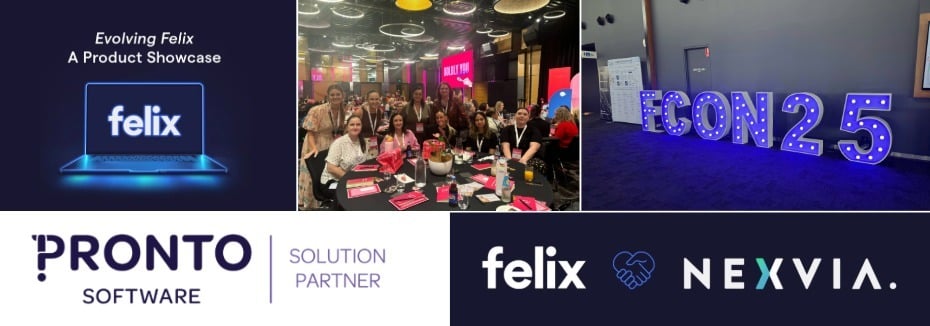Transforming mining: quick wins in back-office efficiency and ESG excellence
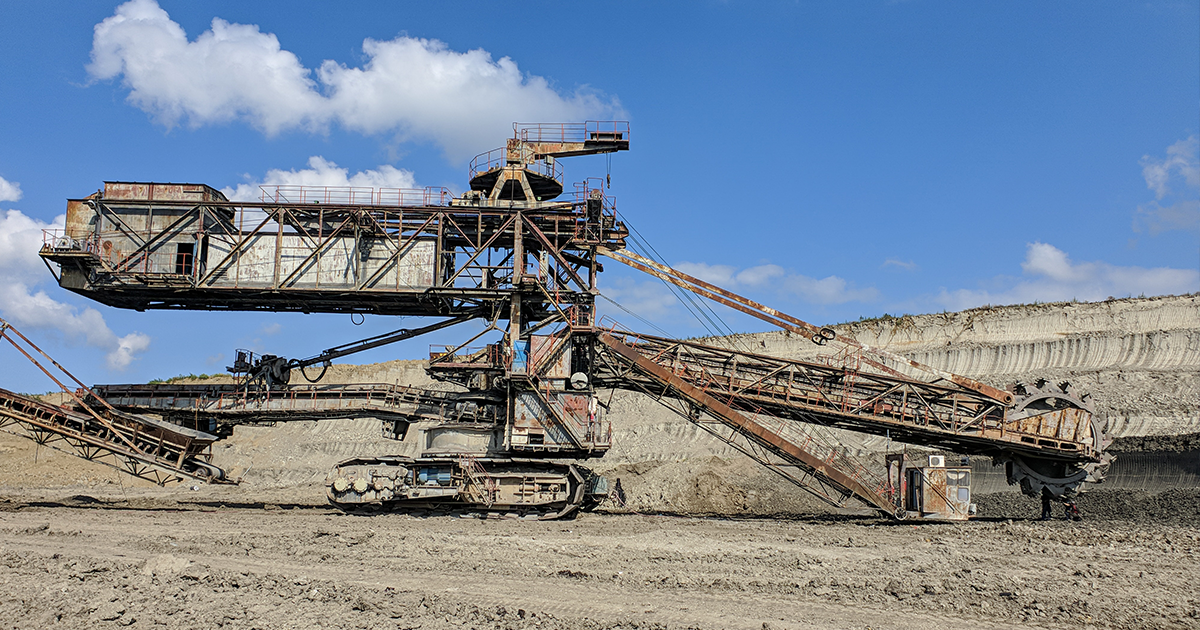
In the dynamic world of mining, technological advancements often take the limelight. The buzz around Artificial Intelligence (AI), drones, and the Internet of Things (IoT) fills the air at industry conferences and in the media. While these innovations are exciting, there's another less glamorous but incredibly effective avenue that mining companies can explore today – back-office process improvement.
In this article, we'll delve into why technology in the form of improved procurement and vendor management processes is the real quick win that mining projects need, alongside a focus on Environmental, Social, and Governance (ESG) initiatives.
You can also download this in PDF to read later
The mining challenge: cost and time overruns
Mining projects often face the challenge of cost and time overruns.
McKinsey reports that as many as 4 in 5 mining projects face delays and exceed budget estimates by an average of 43%.
EY's study of 192 global mining and metals projects worth more than $1 billion found that 64% ran over budget or schedule – or both – with the average cost overrun sitting at 39%.
In another survey:
- 60% of surveyed companies reported projects being behind schedule and over budget.
- Enterprise-wide contractor spend is upward of $1 billion per year for 11% of companies.
- Nearly 90% were using manual spreadsheets to track project metrics such as completion, productivity, budget, and timeliness.
If mining companies manage 100 or more contractors/vendors at their site, with each relationship spanning multiple agreements, projects etc., the complexity can quickly escalate.
This is where technology and strategic improvements in back-office operations can make a significant impact.
Give time back to things that matter
In a typical procurement life cycle, teams tend to spend more time on tactical activities despite the most value being found in strategic activities at the start and end (refer to diagram below). And why is that the case? Again, it’s the sheer volume of vendors and contractors to manage, inadequate tech coupled with pressure to keep things on track. It’s not surprising to hear and see staff spending the bulk of their time on things like vendor onboarding, issuing and following up on tender responses etc.
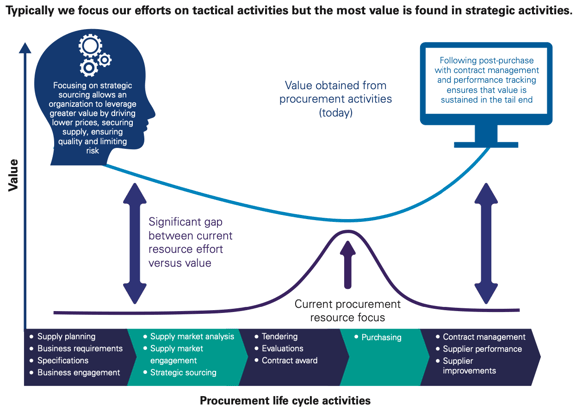
Source: KPMG
With the right tools, we can confidently flip the paradigm and boost efficiency and effectiveness.
On the efficiency front, using dedicated vendor management and sourcing systems would speed things up. (We’ve also written about why you need purpose-built software over ERP here).
However, if the current “technology” in use is spreadsheets or paper-based formats, the benefits in terms of cost savings would be dramatic.
The table below lists some examples where cost savings and cost avoidance can be realised.
|
High level process |
Ideal state |
What it eliminates/minimises |
|
Vendor onboarding |
|
|
|
Vendor database and compliance |
|
|
|
RFQ preparation |
|
|
|
RFQ tracking & evaluation |
|
|
On the effectiveness front, the valuable time saved can now be spent on strategic tasks such as supply/demand planning, category management and vendor performance management. Technology not only enables teams to focus on more value-adding tasks like these, but also equips them to do the tasks better.
In other words, tech can help put relationship back into vendor relationship management. Another way to look at it is using the 5 layers of supplier/client relationships.
If you spend most of your time on the lower, more tactical layers, now it’s the time to lift the game and start extracting true value from the higher layers.

Source: Grosvenor
The table below shows some examples of the more strategic activities and how tech can enable them.
|
Activity |
Benefit |
How tech can help |
|
Contract bundling |
Economies of Scale: Agreements with suppliers should span different operating units, maximising economies of scale and ensuring a more streamlined supply chain. |
A single source of truth accessible by different teams that includes up-to-date information on vendors and contracts held will enable HQ to make informed decisions. The central team can then negotiate and set up preferred vendor lists with pre-defined rates for project teams to use. |
|
Contract unbundling |
Competition among suppliers can elevate industry standards, motivating them to deliver better results and win a higher share of the business. Also, breaking the scope may also create more opportunities for other suppliers, which can help meet ESG targets. |
With time freed up from streamlined processes, teams can focus on reviewing spend and performance data and decide whether this is a good strategy. If yes, technology can then help streamline the RFx process as noted above. |
|
Performance improvement |
Regularly reviewing supplier performance and addressing issues promptly helps overcome challenges faster. This promotes learning and ensures maximum supplier performance. |
By setting up performance evaluation systematically, miners can capture lessons learned and share the knowledge enterprise-wide or to those that matter. They can also review and update evaluation criteria as needed, e.g. due to new legislations, and roll it out consistently. |
|
Partner management |
By understanding their supply chain better, mining companies can negotiate from a position of strength. They can also nurture relationships with strategic suppliers, align incentives and collaborate on bigger challenges such as Net Zero targets. |
A centralised database that captures all interactions with vendors can help miners get a comprehensive picture and perform necessary analysis. They can then tag vendors as strategic partners, request more documents and centralise all communications in-platform for transparency. |
Embracing ESG excellence
In the realm of mining, environmental sustainability and social responsibility are paramount. In this year’s EY mining and metals business risks and opportunities survey data, ESG tops the list. Indeed, scrutiny from all stakeholder groups is increasing, particularly around ESG issues. Those that get it right enjoy benefits including improved access to capital, a healthier talent pipeline and stronger license to operate [LTO].
Capital has gained prominence in the rankings as the industry vies for investments and incentives to expedite the exploration and development of minerals and metals crucial to the energy transition. These efforts align with pressing climate change issues like Net Zero and decarbonisation.
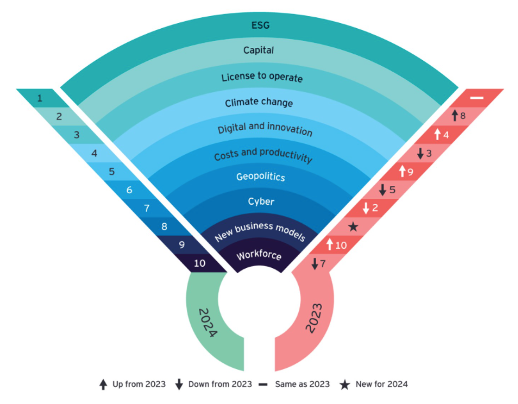
Source: EY
So how does tech help with increased ESG-related procurement and reporting requirements?
Throughout the engagement lifecycle, there are multiple touchpoints, each representing an opportunity for digitisation. Below are some examples:
|
Process |
How tech can help |
|
Prequalification |
|
|
RFx response & performance evaluation |
|
|
Vendor segmentation |
Easily identify vendors with certain attributes, e.g. Indigenous-owned, Carbon neutral etc. without having to go through piles of spreadsheets or emails |
|
Reporting |
Export vendor and spend data to perform further analysis and reporting as part of reporting schemes such as GRI, TFCD etc. |
You can also download this in PDF to read later
Governance, data and reporting
Governance is akin to a backbone that helps the whole operation run smoothly, yet it is also often overlooked because people assume “it’s just there” until an incident happens.
So, what can mining companies do to get on the front foot when it comes to governance? Firstly, some diagnostic questions:
- Do you have checks and balances in place within your own organisation?
- Do you have policies and procedures that govern the collection, processing and storage of data about clients, employees or suppliers?
- In case of an incident, are you able to provide applicable records and information?
Then, you’d also need to ask yourself: Are you able to ensure all the above for the vendors in your supply chain?
Most likely, miners would have a central procurement team doing a range of tasks from supplier onboarding to tender issuing and contract management. Some may have evolved beyond the centralised model and adopted the hybrid model.
We’ve previously written about the rise of project-led centrally-enabled procurement. Now, whatever approach your organisation has, technology can serve as an enabler of strong governance. How? The table below lists some examples.
|
Activity |
How tech can help |
Benefit |
|
Roll out processes and procedures |
Automated approval/evaluation workflows involving relevant stakeholders |
Minimise fraud, maximise effectiveness, increase efficiency |
|
Up-to-date centralised data on vendor compliance |
Avoid penalty, cost/time overruns for engaging suboptimal vendors |
|
|
Clearly tagging or flagging non-compliant or “need attention” vendors to formulate responses systematically |
||
|
Run a competitive bidding process for works over a certain value |
Defensible procurement decisions |
|
|
Establish preferred supplier lists with pre-negotiated rates |
Flexibility and speed for project teams to engage vendors |
|
|
Ensure there are checks and balances |
Access permission for certain areas |
Minimise fraud/abuse |
|
Automated approval routes |
Minimise fraud |
|
|
Aggregate, export and analyse spend data |
Minimise maverick spend |
|
|
Maintain records in case of an incident/audit |
Audit trail of every interaction captured in one place |
Provide evidence of procedural compliance when needed |
Onto data and reporting, good governance practices ensure that data is managed effectively and used responsibly, while high quality data supports governance by providing the information needed to make informed decisions and monitor performance.
|
Topic |
Why |
How tech can help |
|
Data quality and accuracy |
Accurate data is essential for making informed decisions, optimising the supply chain and avoiding costly mistakes. |
|
|
Data security |
The mining industry deals with sensitive information related to clients, suppliers, pricing, and procurement contracts. |
Enables policies and procedures for data collection, storage, use, and dissemination:
|
Closing remarks
In conclusion, while AI, drones, and IoT are revolutionising the mining industry, the often-overlooked back-office processes such as vendor management and procurement are where you can achieve quick wins and ensure cost-effective, sustainable, and ethical operations.
Moreover, the mining industry is experiencing a "war for talent." To attract and retain younger, more digitally savvy workers, mining companies need to embrace technology, streamline their operations, and create an environment that values innovation.
As shown in a recent survey by KPMG, it’s clear that mining companies are likely to invest in technology over the next 5 years to improve ESG performance and efficiency of operations. So, if you haven’t started, now is the time!
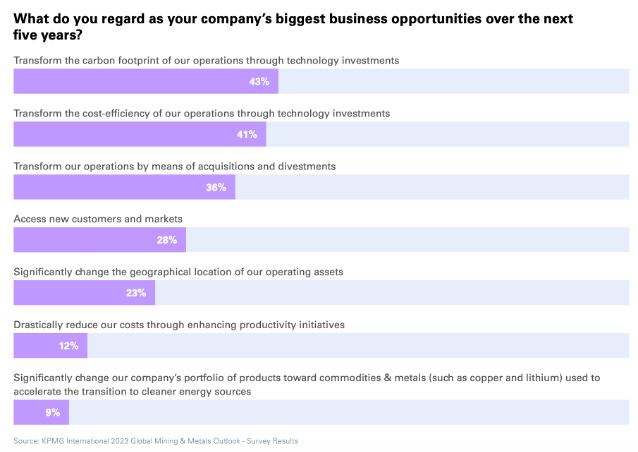
Source: KPMG

Recent Articles
2025 in review: Milestones, insights and achievements
2025 – a year of that brought meaningful developments for Felix as we continue to address the evolving needs of organisations navigating complex supply-chain environments.
Top 10 reasons for a centralised vendor database
As organisations grow, so does the complexity of managing vendor relationships. Many still rely on spreadsheets or siloed systems, which can lead to inefficiencies, data inconsistencies, and compliance risks. A centralised vendor database offers a smarter, more scalable solution that brings structure, visibility, and control to procurement operations.
Here are the top 10 reasons why centralising your vendor data is a strategic move.
Five ways poor contract storage could be costing your organisation money
Contracts are the backbone of every business relationship – legally binding documents that define expectations, responsibilities, and value.
But what if the way your organisation stores those contracts is quietly costing you money?
Let's stay in touch
Get the monthly dose of supply chain, procurement and technology insights with the Felix newsletter.

